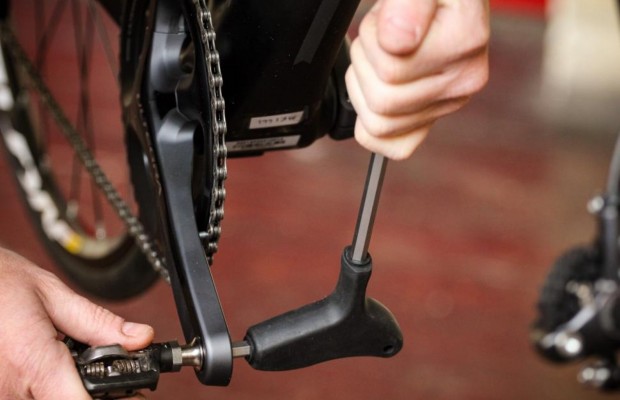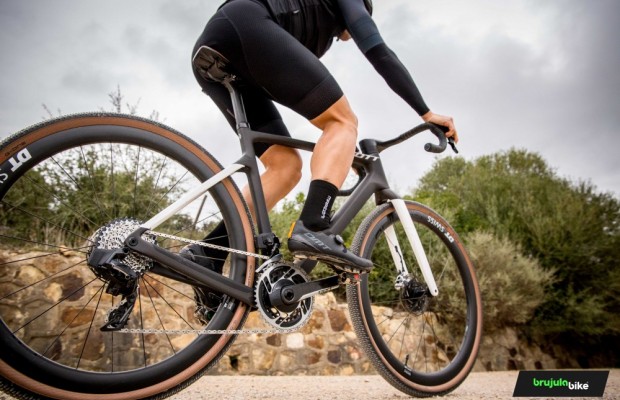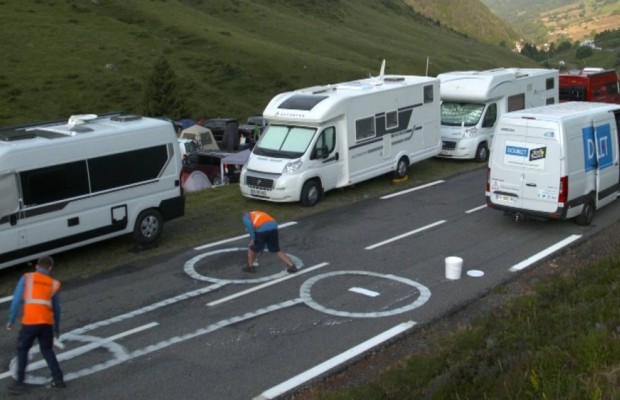Energy gels: advice on when, how and why to take them
Energy gels are one of the most widely used supplements among athletes of any sport.
Compact in size and with a great supply of energy, they are perfect for training and competitions, but surely you have also heard who do not like them or do not work well. Here we tell you all about these products.
What are energy gels and why you should at least give them a try
First of all, it is essential to clarify that there are countless types of energy gels on the market today. And it is just that, the great variety, which often causes confusion and mistakes when it comes to taking them.

Generally, we understand an energy gel as a food supplement with a gelatinous texture (from liquids to compact jellies) that provides a large amount of carbohydrates with different flavors.
RECOMENDADO

How to wash your cycling clothes? 10 keys to make them always look new

The real importance of signing up for a race

How to change the pedals of any bike in 5 steps

The best gravel groupsets of the moment

Complete list of the highest paid cyclists of 2025

This is how they erase the penises that are drawn on the roads of the Tour de France
The core of any gel will always be a large proportion of carbohydrates and from there we can find with different additives such as vitamins or stimulants, but what interests us is its energy contribution: carbohydrates.
Among the carbohydrates most commonly used in these gels, glucose is undoubtedly the most common and well-known, but there are many others, such as fructose, syrups or maltodextrin.
When taken during aerobic activities, such as cycling, they ensure an instant energy supply because they are absorbed very quickly by the body. That is why they are essential in any cycling competition.
An energy gel takes 5 to 10 minutes to take effect. Although it depends on its composition and how accustomed we are to take them, it would be enough to take one in advance to have that energy before facing the climb to a port, for example.
How and when to take an energy gel
In general, the answer to who should take an energy gel is simple: virtually any athlete who wants to maintain consistent performance without ups and downs.
Carbohydrates, stored in the form of glycogen, are the main source of energy used by our body in aerobic activities, and the dreaded lows occur when we run out of the most immediately available reserves and do not replenish them during the activity.
It is therefore advisable to take an energy gel every 30 to 40 minutes of activity.
This time estimation will depend on the amount of carbohydrates in the gel. They range from 20 to 25 g (the most common) to 90 g (only recommended for those who have trained that carbohydrate intake).

Remember one figure: 45 grams. These are the estimated carbohydrates per hour, it may be more or less depending on your effort, but it is an approximate value. If the gels usually come in packs of 25 grams, estimate a couple of them per hour. This is provided that your route or competition is long.
7 tips for taking energy gels
For some, these gels are like guardian angels, keeping fatigue from wreaking havoc on their performance.
But for others they may be like Russian roulette as they do not always get the same result.
That's the problem with these gels, you have to test them well in different situations, each of us feel differently and sometimes they can have the opposite effect. So you should take these tips as general rules and it is best to pay attention to tip number 6 to find out what really works for you.
1. Choose gels that contain only carbohydrates (if you can find them).
With energy gels we are looking for a quick supply of carbohydrates, so it would be interesting if that were their only compound.
Nowadays, most of them include vitamins, amino acids, salts, etc. But these additives often have more of a function of attracting the buyer than on the performance of the gel.
2. Take them little by little.
When you take one of these gels, you are incorporating a large amount of glucose into your stomach.
Sometimes if the ingestion of the gel is done in a single intake all at once, it can cause nausea and stomach pain. In addition, they can produce an almost immediate rebound effect and cause hypoglycemia.
If you take them little by little, your body will assimilate them better and you can prevent adverse effects.
3. Take them with some liquid, better if it is not isotonic.
The so-called hydrogels are gels that already incorporate a large amount of water. This facilitates the assimilation of the gel by our body.
That is why if we take a normal gel it is more than advisable to do it with a good drink of water.
If instead of water we have isotonic drink, think that some of these drinks already contain glucose and we would be incorporating a large number of sugars at once. This can result in hypoglycemia and gastrointestinal pain.

4. How many gels to take
Gels provide us with the type of energy that our body consumes first -some gels are specific for ultradistance-, meaning that if we have eaten well before our bike ride, we will not need to take them until we have been cycling for about 90 minutes.
If, as a rule, we take a gel before training, even if we have eaten just before, we may suffer the hypoglycemic effects mentioned above.
After 90 minutes we can take one every 30 or 40 minutes of activity. The total number of gels you can take will depend on the tolerance of each organism.
5. Try different flavors and textures, combine them!
On outings or long routes of more than 2-3 hours, it is ideal that our food is not only composed of gels, even so, if we take several during the same outing, try to make them of different flavors and even alternating sweet and salty flavors.
The cloying that these gels can produce can cause you to avoid food intake and therefore the immediate onset of fatigue.

6. Training the intake of gels during the activity
Until now, the most widespread was to consume about 30-60g of carbohydrates per hour for aerobic activities. But in recent years the trend has been changing and some elite athletes are now consuming up to 90g of carbohydrates per hour to increase their performance. Van der Poel is one of them.
This increase in carbohydrate intake can only be achieved by getting our body used to it during training.
It is interesting that during our training sessions we try several brands and types of gels so that in competitions or more important outings they do not give us problems.
7. Foresee
It is very important that during nutritional training we get a pattern of intake of gels. So that when the competition arrives we know when to take them without having to feel the need to do so.
If you are pedaling and you notice a drop in performance, it is a symptom that you are running late. Try to anticipate these energy losses and you will increase your performance considerably.
Quick answers to common questions about energy gels
What is an energy gel?
A food supplement of fast absorption and gelatinous texture with a high carbohydrate content.
How are energy gels taken?
Accompanied with a little water.
When to take an energy gel?
One every 20 or 40 minutes of activity, depending on carbohydrate ratio.
Who should take energy gels?
Any athlete who wants to maintain consistent performance without ups and downs.
How long does it take for a gel to take effect?
From 5 to 10 minutes.
What are the best energy gels?
Those containing only carbohydrates in a 2:1 ratio (glucose - maltodextrin : fructose), i.e. 1 g of glucose - maltodextrin for every 0.5 g of fructose.
Can I take expired energy gels?
When buying energy gels you should take into account their expiration date, as sometimes it may be close. Check if it is best before or use by date. In the first case the gel can be taken respecting certain margins of time.
What types of energy gels are there?
Only with carbohydrates (in different proportions) or accompanied by vitamins and/or stimulants. In addition, they are available in different textures (from more to less liquid) and with an infinite number of flavors.
What is the price of an energy gel?
They range from just over €1 to over €3. But price is not a good indicator for gels. You should look at the amount of carbohydrates they contain and make sure that they work well and do not give you stomach problems.